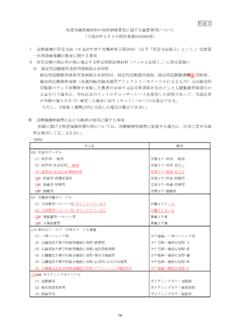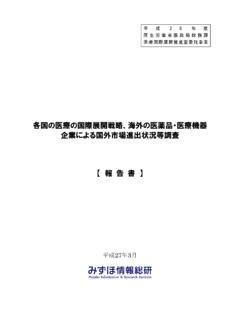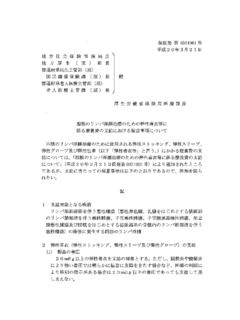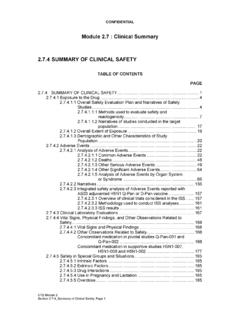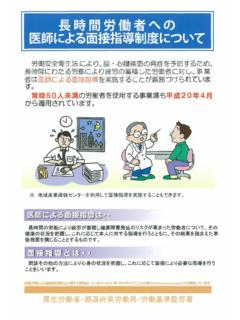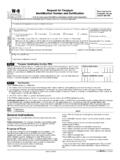Transcription of HAZARD ANALYSIS AND CRITICAL CONTROL POINT …
1 CAC/RCP 1-1969, Rev. 4-2003 - Annex Page 21 HAZARD ANALYSIS AND CRITICAL CONTROL POINT (HACCP) SYSTEM AND GUIDELINES FOR ITS APPLICATION Annex to CAC/RCP 1-1969 (Rev. 4 - 2003) PREAMBLE The first section of this document sets out the principles of the HAZARD ANALYSIS and CRITICAL CONTROL POINT (HACCP) system adopted by the Codex Alimentarius Commission. The second section provides general guidance for the application of the system while recognizing that the details of application may vary depending on the circumstances of the food The HACCP system, which is science based and systematic, identifies specific hazards and measures for their CONTROL to ensure the safety of food. HACCP is a tool to assess hazards and establish CONTROL systems that focus on prevention rather than relying mainly on end-product testing.
2 Any HACCP system is capable of accommodating change, such as advances in equipment design, processing procedures or technological developments. HACCP can be applied throughout the food chain from primary production to final consumption and its implementation should be guided by scientific evidence of risks to human health. As well as enhancing food safety, implementation of HACCP can provide other significant benefits. In addition, the application of HACCP systems can aid inspection by regulatory authorities and promote international trade by increasing confidence in food safety. The successful application of HACCP requires the full commitment and involvement of management and the work force. It also requires a multidisciplinary approach; this multidisciplinary approach should include, when appropriate, expertise in agronomy, veterinary health, production, microbiology, medicine, public health, food technology, environmental health, chemistry and engineering, according to the particular study.
3 The application of HACCP is compatible with the implementation of quality management systems, such as the ISO 9000 series, and is the system of choice in the management of food safety within such systems. While the application of HACCP to food safety was considered here, the concept can be applied to other aspects of food quality. DEFINITIONS CONTROL (verb): To take all necessary actions to ensure and maintain compliance with criteria established in the HACCP plan. CONTROL (noun): The state wherein correct procedures are being followed and criteria are being met. CONTROL measure: Any action and activity that can be used to prevent or eliminate a food safety HAZARD or reduce it to an acceptable level. Corrective action: Any action to be taken when the results of monitoring at the CCP indicate a loss of CONTROL .
4 CRITICAL CONTROL POINT (CCP): A step at which CONTROL can be applied and is essential to prevent or eliminate a food safety HAZARD or reduce it to an acceptable level. CRITICAL limit: A criterion which separates acceptability from unacceptability. 2 The Principles of the HACCP System set the basis for the requirements for the application of HACCP, while the Guidelines for the Application provide general guidance for practical application. CAC/RCP 1-1969, Rev. 4-2003 - Annex Page 22 Deviation: Failure to meet a CRITICAL limit. Flow diagram: A systematic representation of the sequence of steps or operations used in the production or manufacture of a particular food item. HACCP: A system which identifies, evaluates, and controls hazards which are significant for food safety.
5 HACCP plan: A document prepared in accordance with the principles of HACCP to ensure CONTROL of hazards which are significant for food safety in the segment of the food chain under consideration. HAZARD : A biological, chemical or physical agent in, or condition of, food with the potential to cause an adverse health effect. HAZARD ANALYSIS : The process of collecting and evaluating information on hazards and conditions leading to their presence to decide which are significant for food safety and therefore should be addressed in the HACCP plan. Monitor: The act of conducting a planned sequence of observations or measurements of CONTROL parameters to assess whether a CCP is under CONTROL . Step: A POINT , procedure, operation or stage in the food chain including raw materials, from primary production to final consumption.
6 Validation: Obtaining evidence that the elements of the HACCP plan are effective. Verification: The application of methods, procedures, tests and other evaluations, in addition to monitoring to determine compliance with the HACCP plan. PRINCIPLES OF THE HACCP SYSTEM The HACCP system consists of the following seven principles: PRINCIPLE 1 Conduct a HAZARD ANALYSIS . PRINCIPLE 2 Determine the CRITICAL CONTROL points (CCPs). PRINCIPLE 3 Establish CRITICAL limit(s). PRINCIPLE 4 Establish a system to monitor CONTROL of the CCP. PRINCIPLE 5 Establish the corrective action to be taken when monitoring indicates that a particular CCP is not under CONTROL . PRINCIPLE 6 Establish procedures for verification to confirm that the HACCP system is working effectively. CAC/RCP 1-1969, Rev. 4-2003 - Annex Page 23 PRINCIPLE 7 Establish documentation concerning all procedures and records appropriate to these principles and their application.
7 CAC/RCP 1-1969, Rev. 4-2003 - Annex Page 24 GUIDELINES FOR THE APPLICATION OF THE HACCP SYSTEM INTRODUCTION Prior to application of HACCP to any sector of the food chain, that sector should have in place prerequisite programs such as good hygienic practices according to the Codex General Principles of Food Hygiene, the appropriate Codex Codes of Practice, and appropriate food safety requirements. These prerequisite programs to HACCP, including training, should be well established, fully operational and verified in order to facilitate the successful application and implementation of the HACCP system. For all types of food business, management awareness and commitment is necessary for implementation of an effective HACCP system. The effectiveness will also rely upon management and employees having the appropriate HACCP knowledge and skills.
8 During HAZARD identification, evaluation, and subsequent operations in designing and applying HACCP systems, consideration must be given to the impact of raw materials, ingredients, food manufacturing practices, role of manufacturing processes to CONTROL hazards , likely end-use of the product, categories of consumers of concern, and epidemiological evidence relative to food safety. The intent of the HACCP system is to focus CONTROL at CRITICAL CONTROL points (CCPs). Redesign of the operation should be considered if a HAZARD which must be controlled is identified but no CCPs are found. HACCP should be applied to each specific operation separately. CCPs identified in any given example in any Codex Code of Hygienic Practice might not be the only ones identified for a specific application or might be of a different nature.
9 The HACCP application should be reviewed and necessary changes made when any modification is made in the product, process, or any step. The application of the HACCP principles should be the responsibility of each individual businesses . However, it is recognised by governments and businesses that there may be obstacles that hinder the effective application of the HACCP principles by individual business. This is particularly relevant in small and/or less developed businesses . While it is recognized that when applying HACCP, flexibility appropriate to the business is important, all seven principles must be applied in the HACCP system. This flexibility should take into account the nature and size of the operation, including the human and financial resources, infrastructure, processes, knowledge and practical constraints.
10 Small and/or less developed businesses do not always have the resources and the necessary expertise on site for the development and implementation of an effective HACCP plan. In such situations, expert advice should be obtained from other sources, which may include: trade and industry associations, independent experts and regulatory authorities. HACCP literature and especially sector-specific HACCP guides can be valuable. HACCP guidance developed by experts relevant to the process or type of operation may provide a useful tool for businesses in designing and implementing the HACCP plan. Where businesses are using expertly developed HACCP guidance, it is essential that it is specific to the foods and/or processes under consideration. More detailed information on the obstacles in implementing HACCP, particularly in reference to SLDBs, and recommendations in resolving these obstacles, can be found in Obstacles to the Application of HACCP, Particularly in Small and Less Developed businesses , and Approaches to Overcome Them (document in preparation by FAO/WHO).
